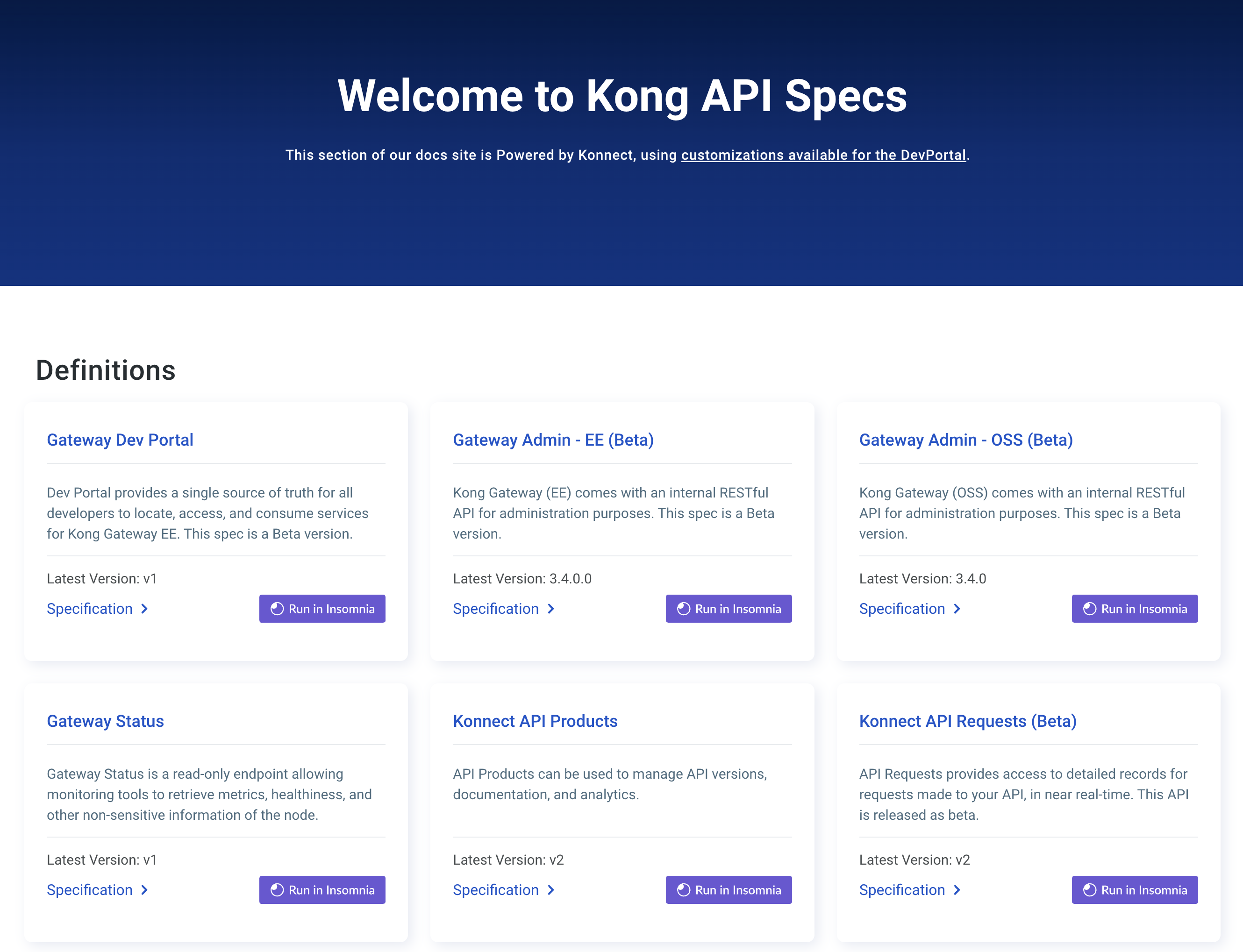このページは、まだ日本語ではご利用いただけません。翻訳中です。
旧バージョンのドキュメントを参照しています。 最新のドキュメントはこちらをご参照ください。
Install on Kubernetes
This page explains how to install Kong Gateway with Kong Ingress Controller in DB-less mode. To install with a database, see the documentation on installing with Helm.
This page also includes the equivalent commands for OpenShift.
In DB-less mode on Kubernetes, the config is stored in etcd, the Kubernetes native data store. For more information, see Kubernetes Deployment Options.
The Kong Gateway software is governed by the Kong Software License Agreement. Kong Gateway (OSS) is licensed under an Apache 2.0 license.
Prerequisites
- A Kubernetes cluster v1.19 or later
-
kubectlv1.19 or later - (Enterprise only) A
license.jsonfile from Kong
Create namespace
Create the namespace for Kong Gateway with Kong Ingress Controller. For example:
## on Kubernetes native
kubectl create namespace kong
## on OpenShift
oc new-project kong
Create license secret
-
Save your license file temporarily with the filename
license(no file extension). -
Run:
## on Kubernetes native kubectl create secret generic kong-enterprise-license --from-file=<absolute-path-to>/license -n kong## on OpenShift oc create secret generic kong-enterprise-license --from-file=./license -n kong
Deploy
-
Run one of the following:
## Kong Gateway on Kubernetes native kubectl apply -f https://raw.githubusercontent.com/Kong/kubernetes-ingress-controller/v3.4.4/deploy/single/all-in-one-dbless-k4k8s-enterprise.yaml## Kong Gateway on OpenShift oc create -f https://raw.githubusercontent.com/Kong/kubernetes-ingress-controller/v3.4.4/deploy/single/all-in-one-dbless-k4k8s-enterprise.yaml## Kong Gateway (OSS) on Kubernetes native kubectl apply -f https://raw.githubusercontent.com/Kong/kubernetes-ingress-controller/v3.4.4/deploy/single/all-in-one-dbless.yamlThis might take a few minutes.
-
Check the install status:
kubectl get pods -n kongor:
oc get pods -n kong -
To make HTTP requests, you need the IP address of the load balancer. Get the
loadBalanceraddress and store it in a localPROXY_IPenvironment variable:Note: Some cluster providers only provide a DNS name for load balancers. In this case, specify
.hostnameinstead of.ip.export PROXY_IP=$(kubectl get -o jsonpath="{.status.loadBalancer.ingress[0].ip}" service -n kong kong-proxy) -
Verify that the value of
$PROXY_IPmatches the value of the external host:echo $PROXY_IPThis should match the
EXTERNAL_IPvalue of thekong-proxyservice returned by the Kubernetes API:kubectl get service kong-proxy -n kongor:
oc get service kong-proxy -n kong -
Invoke a test request:
curl $PROXY_IPThis should return the following response from Gateway:
{"message":"no Route matched with those values"}
Next steps
See the Kong Ingress Controller docs for how-to guides, reference guides, and more.












